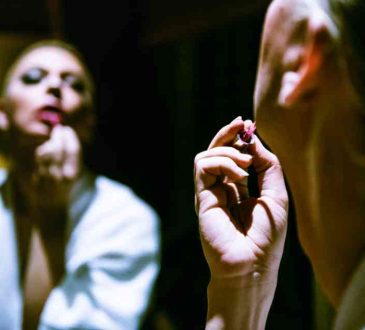6 Facts About Corset You Might Not Know

The first time I ever saw a corset was in the movie Titanic, and I could see how much struggle it was put one on. But, I was a kid back then when the movie had released and was not really bothered about the whole corset thing. It was only in late adolescent I found out that corsets were once traditionally a part of both men and women’s outfits and were very tightly done on the body.
Today, corsets have become obsolete, though you might see them in movies such as Cinderella; they often attract negative attention for quite genuine reasons. Anyway, still, there are many facts about this piece of clothing which not many of you know. Corset has a long history, and hence, it has many interesting facts.
In this post, I will talk about 6 facts about corset which could be new information for you.
- Men Wore It Too.
I already noted that corsets were part of men’s clothing in earlier times, but interestingly, not many people know that. In the latter half of the 18th century, a customized form of corsets specially made for men emerged: shape-fitted trousers and jackets. However, the fashion did not last long, and Englishmen and Frenchmen abandoned it. Austrian men, however, wore it for quite a long time even after that. - It Was All Because of A Certain Queen.
The origins of the corset are hazy, though there is one reason with respect to which most people share unanimity.
It is said that the wife of French King Henry II, Queen Catherine De’ Medici, did not allow women with thick bodies, especially around the waist area, in the court, as a consequence of which corsets became popular. By the way, this fact dates back to the 16th century so you know this had been happening for quite some time. - Napoleon Hated It.
Napoleon is known for many things, but very few would know that he particularly disliked corsets. With time, he grew as a formidable leader and also as a staunch campaigner of anti-corset movements.
He believed that corsets are reasons for infertility. His thoughts were seconded by medical practitioners who associated reduced fertility with corsets. In addition to that, they said that tight shapewear affects the uterus lining and can impact menstruation cycles.
I guess, Napoleon was one of the first few persons who saw, and very rightly so, corsets as extremely harmful. - Baleen Whales Were Sacrificed.
There was a time when Baleen Whales almost got extinct because their bones were being increasingly used in the making of corsets. At one point in time, corsets became a fashionable trend across Europe. Everyone wanted an hourglass figure so inevitably baleen whales started being hunted at unprecedented levels. Thankfully, alternatives were found and baleen whales were saved. - Styles Changed With Rulers.
During the reign of Queen Victoria, corsets were limited to the belly region. It was during the Victorian period that hourglass figure reached the peak of its popularity. Steel boning was used to shape the waist. Since that period witnessed rapid industrialization, mass production of such corsets became rampant which made these clothing easily accessible.
When the Queen died, King Edward took over, and with him, the style changed. Hourglass shape was no longer fashionable and women wanted something new. During his reign, the ‘S’ bend became popular which basically involved pushing forward the hips and breasts.
By the time it was early 20th century, better fashion alternatives appeared such as flapper dresses which did away with the need of wearing corsets. Slowly and gradually, corsets’ fashion died down, and now we study them as part of fashion and its history. - Real Health Issues.
Corsets were extremely dangerous because they were seriously very tight on the body. This created a lot of pressure in the abdomen area and caused respiratory and reproductive problems. Moreover, studies found that corset-wearing women were more vulnerable to pneumonia.
In addition to the aforesaid problems, women who wore corsets for longer durations reportedly suffered from excessive back pain. Their postures were greatly affected as a result of which it became difficult for their bodies to stand upright.
See, Napoleon did know what he was doing!
Have you read?
# World’s Top 100 Cities To Reside In For 2019.
# RANKED: The World’s Top 10 Richest Countries (2017-2027).
# Revealed: Top Rated Visitor Attractions In Every Country In The World.
# The World’s Most Powerful Militaries In 2018.
# The World’s Most (And Least) Expensive Cities For Taxis, 2018.
Add CEOWORLD magazine to your Google News feed.
Follow CEOWORLD magazine headlines on: Google News, LinkedIn, Twitter, and Facebook.
This report/news/ranking/statistics has been prepared only for general guidance on matters of interest and does not constitute professional advice. You should not act upon the information contained in this publication without obtaining specific professional advice. No representation or warranty (express or implied) is given as to the accuracy or completeness of the information contained in this publication, and, to the extent permitted by law, CEOWORLD magazine does not accept or assume any liability, responsibility or duty of care for any consequences of you or anyone else acting, or refraining to act, in reliance on the information contained in this publication or for any decision based on it.
Copyright 2024 The CEOWORLD magazine. All rights reserved. This material (and any extract from it) must not be copied, redistributed or placed on any website, without CEOWORLD magazine' prior written consent. For media queries, please contact: info@ceoworld.biz
SUBSCRIBE NEWSLETTER








